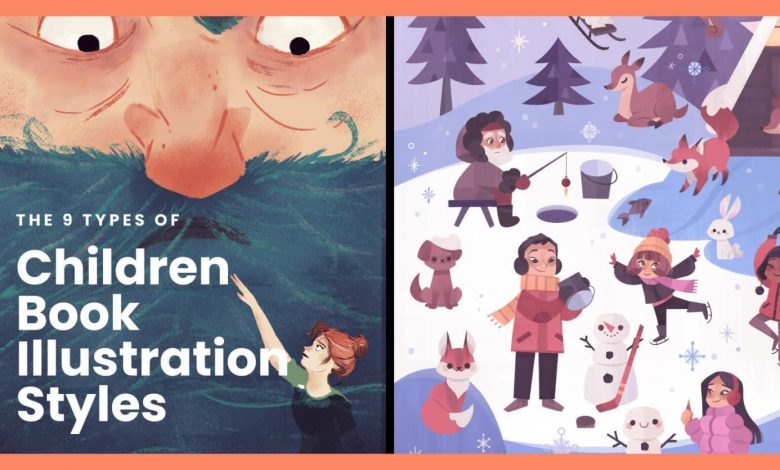The Art of Illustration in Children’s Book Design

The Art of Illustration in Children’s Book Design
Enhancing the Reading Experience With Visuals
The Power of Visuals in Children’s Books
Children’s books are not just about storytelling; they are a visual feast that captivates young minds. Illustrations play a crucial role in bringing stories to life and engaging young readers. The art of illustration in children’s book design goes beyond mere decoration; it enhances the reading experience and makes the story more relatable and memorable for children.
Creating Engaging Characters
How do illustrations create engaging characters in children’s books?
Illustrations allow young readers to connect with the characters in a more profound way. They provide visual cues that help children imagine the story better and relate to the characters emotionally. Expressive faces, colorful attire, and unique features help children identify with the characters and become emotionally invested in their journeys.
How should an illustrator approach character design?
When designing characters for children’s books, an illustrator must consider the target audience. Paying attention to age-appropriate details and ensuring the characters are relatable and diverse is essential. A skilled illustrator can create characters that reflect the emotional range of children and help them navigate through different experiences found in books.
Setting the Mood with Illustrations
How do illustrations contribute to setting the mood in children’s books?
Illustrations have the power to set the tone and atmosphere of a story. By using colors, textures, and visual elements, illustrations can convey emotions and create different moods. Bright and vibrant illustrations might match a lighthearted and playful story, while darker tones and shadows can enhance the suspense in a mystery or adventure tale.
How can an illustrator effectively capture the mood in their illustrations?
An illustrator can capture the mood by paying attention to details such as lighting, composition, and color palette. By using warm colors, soft edges, and gentle shading, they can create a cozy and comforting atmosphere. On the other hand, bold and contrasting colors, sharp angles, and dynamic compositions can evoke excitement, tension, or curiosity.
Stimulating Imagination and Creativity
How do illustrations stimulate a child’s imagination and creativity?
Illustrations act as visual stimuli that engage a child’s imaginative and curious nature. They provide visual interpretations of the story that help children visualize settings, characters, and actions. By leaving room for interpretation, illustrations encourage children to think creatively and develop their storytelling skills.
How can an illustrator foster imagination and creativity through their illustrations?
An illustrator can foster imagination and creativity by leaving some elements of the story ambiguous, allowing children to fill in the gaps with their imagination. Including details that can spark curiosity and generate questions can also inspire children to explore new ideas and create their own stories.
FAQs:
Q: Can illustrations in children’s books help reluctant readers?
A: Yes, illustrations play a crucial role in enticing reluctant readers. They provide visual breaks in the text, making the reading experience less daunting for children who are beginning to explore books independently. The visuals also help them understand the narrative, making the story more accessible and engaging.
Q: How do I find the right illustrator for my children’s book?
A: Finding the right illustrator for your children’s book requires research and careful consideration. Look for illustrators who have a style that complements your story and resonates with your target audience. Review their portfolios, speak with them about their process, and ensure they understand your vision for the book.
Q: What is the ideal balance between text and illustrations in a children’s book?
A: The balance between text and illustrations depends on the age group and genre of the book. For younger children, more emphasis is placed on the illustrations, with less text per page. As the age group increases, the ratio of text to illustrations can be adjusted accordingly. Ideally, the text and illustrations should work together harmoniously, complementing each other to create a cohesive reading experience.
In conclusion, the art of illustration in children’s book design is a crucial aspect of creating captivating and unforgettable stories for young readers. Illustrations enhance the reading experience, create engaging characters, set the mood, and stimulate imagination and creativity. Finding the right illustrator who understands your vision and appeals to your target audience is essential. So, don’t underestimate the power of illustrations when crafting your next children’s book.



